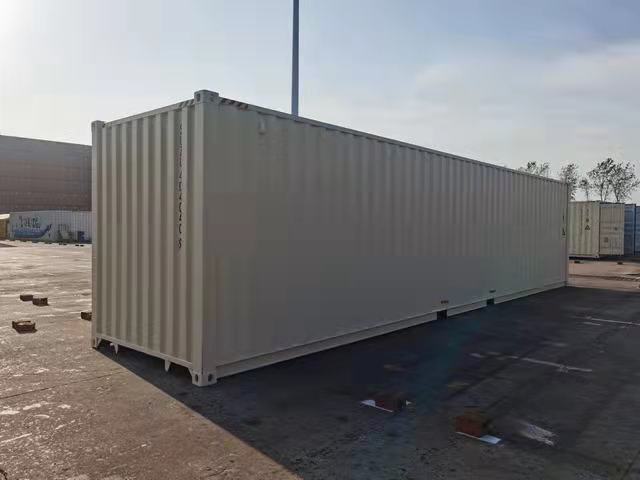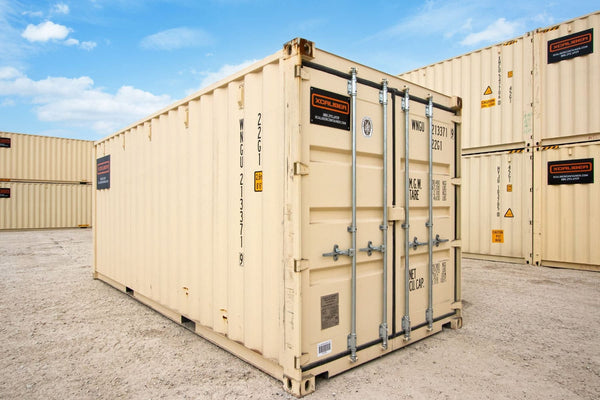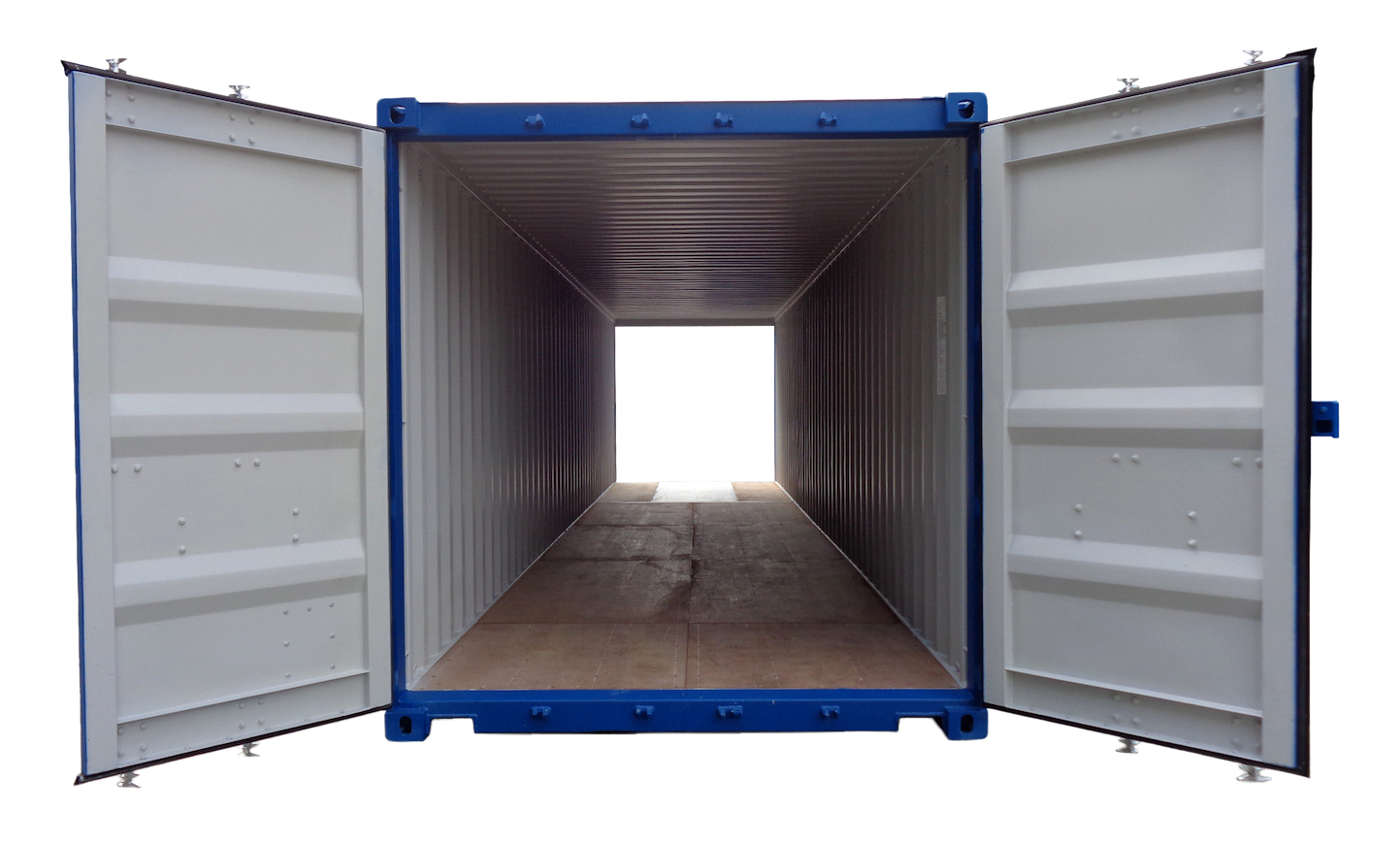Top Features to Look for When You Shop New Shipping Container 40 x 8 x 9.6 for Storage Use
Top Features to Look for When You Shop New Shipping Container 40 x 8 x 9.6 for Storage Use
Blog Article
The Ultimate Overview to Picking the Right Shipping Container for Your Requirements
When it comes to choosing the appropriate shipping container, understanding your particular requirements is essential. You'll wish to consider factors like size, type, and product to guarantee you make the best selection. From conventional dimensions to specialized alternatives, there's a whole lot to explore. Plus, budgeting for both the container and any type of adjustments can make a big distinction. Let's damage down the crucial facets to assist you locate the excellent fit for your needs.
Understanding Delivery Container Sizes
When you're selecting a delivery container, recognizing the different dimensions available is vital for making the appropriate choice. Shipping containers commonly are available in conventional sizes of 20 and 40 feet, however you'll additionally find other measurements. Knowing the size you require relies on what you intend to shop or transport.If you're relocating smaller sized items, a 20-foot container could be optimal, while bigger deliveries typically require a 40-foot container. The elevation can additionally differ; high cube containers supply additional upright space, which can be useful for taller goods.Before making a decision, measure your freight, and take into consideration how much space you'll require for loading and dumping. Always aspect in prospective future demands-- choosing for a slightly larger container might conserve you problem down the line. Eventually, selecting the ideal dimension will certainly boost performance and assure your items are secure during transit
Kinds of Delivery Containers Available
There are numerous sorts of delivery containers readily available, each developed for details purposes and freight demands. The conventional dry container is versatile, ideal for general cargo. If you're shipping subject to spoiling goods, take into consideration a refrigerated container, which maintains a regulated temperature level. For oversized items, high cube containers provide additional height, accommodating taller loads.If you require to transfer heavy machinery or devices, flat shelf containers offer a durable base without walls. Open-top containers allow for very easy loading of tall cargo, with a removable tarpaulin covering for security. If you're searching for adaptability, take into consideration a collapsible container that can be quickly stored when not in use.Lastly, specialized containers like tank containers are utilized for fluids, while vented containers are developed for bulk cargo that needs ventilation. Recognizing your cargo type will help you choose the ideal container to satisfy your shipping requires efficiently.
Material Considerations for Toughness
When selecting a shipping container, the product plays an essential duty in its resilience. You'll desire to evaluate the advantages of steel versus aluminum, particularly relating to rust resistance. Recognizing these aspects can assist you make an extra enlightened choice for your delivery needs.
Steel vs. Light weight aluminum Containers
Exactly how do you select between steel and aluminum containers for your shipping needs? Start by taking into consideration resilience. Steel containers are durable and deal excellent stamina, making them ideal for hefty tons and severe conditions. They withstand damage from effects and are commonly less costly, which can be a major variable for budget-conscious buyers.On the various other hand, aluminum containers are light-weight, which can save you on shipping costs. They're less complicated to navigate and are a wonderful choice if you require to transport products often. Light weight aluminum is generally more pricey and less robust than steel. Consider your particular needs thoroughly, including weight, price, and the type of freight you'll be delivery, to make the right choice for your situation.
Corrosion Resistance Variables
Selecting the right product does not just include weight and cost; rust resistance plays a considerable function in sturdiness. When choosing a delivery container, take into consideration the environment it'll face. Steel containers, while strong, can corrosion otherwise appropriately dealt with. Look for choices with protective coverings or galvanization to boost their life-span. Light weight aluminum, on the other hand, supplies all-natural deterioration resistance, making it perfect for seaside areas or damp conditions. It can be extra expensive. Additionally, evaluate the container's use-- if it'll be subjected to chemicals or harsh weather, prioritize products that can hold up against these problems. Buying a corrosion-resistant container currently can save you from pricey fixings or replacements down the line. Pick intelligently for lasting benefits.
Adjustments and Modification Options
Shipping containers aren't just for transferring products; they can be transformed to satisfy your details demands via numerous adjustments and customization options. You can transform a conventional container into a comfy workplace, a short-lived retail store, and even a personal fitness center. The possibilities are almost endless.Think about including home windows, insulation, or air flow to enhance comfort. You could likewise consider electric circuitry, plumbing, and even custom-made shelving to improve performance. If security's a concern, strengthened locks can supply tranquility of mind.For visual allure, you can repaint the container or add a special design to make it attract attention. Don't forget flooring alternatives-- whether you want resilient plywood or something a lot more innovative, it can raise the space.Ultimately, customizing your delivery container to match your requirements can enhance functionality and produce an one-of-a-kind environment that mirrors your style.
Examining Your Transportation Requirements
When it pertains to using your changed delivery container, understanding your transport requires is essential. Start by determining read what you'll be delivery-- whether it's hefty tools, retail items, or individual products. Each kind of cargo has different demands relating to size, weight, and accessibility.Next, take into consideration the range and mode of transportation. Are you shipping locally, nationally, or internationally? This influences the container's style and capability. If you're making use of vehicles, ensure your container fits conventional measurements for easy loading and unloading.Additionally, consider transit conditions. Will your things need unique defense from climate or temperature level changes? If so, you may need insulation or ventilation attributes in your container.Lastly, analyze just how often you'll be carrying products. Frequent deliveries might need a much more resilient and versatile container to meet ongoing needs. By resolving these aspects, you'll be well-prepared to pick the appropriate delivery container for your needs.
Budgeting for Your Shipping Container
Setting a budget plan for your delivery container is important for ensuring a smooth buying procedure. Figure out exactly how much you can manage to spend. Remember that rates can vary substantially based on size, problem, and kind. New containers typically cost much more, however made use of ones can offer considerable savings.Next, think about any type of additional prices you might incur, such as transportation costs, shipment charges, and modifications. If you intend to personalize the container, consider those expenditures also. Research different distributors to contrast prices and discover the ideal offer that meets your needs.Don' t neglect to include any permits or policies that might use to your purchase and use the container. By clearly outlining your budget plan, you'll be better prepared to make enlightened decisions, guaranteeing you get the appropriate container without breaking the bank.
Upkeep and Care for Durability
To guarantee your delivery container lasts for years, regular upkeep is essential. Beginning by checking the exterior for corrosion, damages, and damages. If you spot any type of concerns, address them instantly to protect against additional damage. Tidy the container regularly, both throughout, to remove dust, debris, and dampness that can lead to corrosion.Ensure the doors secure properly and lube the hinges to avoid rust and sticking. If you're making use of the container for storage, take into consideration adding air flow to lower moisture and mold and mildew growth. For extra protection, use a rust-inhibiting paint or sealant annually.If your container's situated in a rough environment, like coastal locations, you could require to raise maintenance frequency. Keep an eye on the flooring, too; any kind of indicators of wear should be fixed right now. With these straightforward steps, you'll extend the life of your shipping container significantly.
Often Asked Questions
Exactly how Do I Discover a Trustworthy Shipping Container Provider?
To find a reliable shipping container distributor, beginning by researching online reviews, asking for recommendations from pals or market calls, and comparing rates. Always check their credentials and guarantee they go to my blog use quality containers that satisfy your requirements.

Can I Rent a Shipping Container Instead of Purchasing?
Yes, you can most definitely rent a delivery container as opposed to acquiring one. Several distributors supply rental choices, which can conserve you money and supply versatility if Visit Your URL you only need it for a brief duration.
What Permits Are Needed for Container Positioning?

Are Delivery Containers Weatherproof and Suitable for Outdoor Storage?
Yes, delivering containers are typically weatherproof, made to stand up to severe problems. Their durable building and construction maintains your items secure and completely dry, making them suitable for exterior storage. Just ensure appropriate air flow to avoid dampness build-up inside.
How Do I Transfer a Delivery Container Once Bought?

Report this page